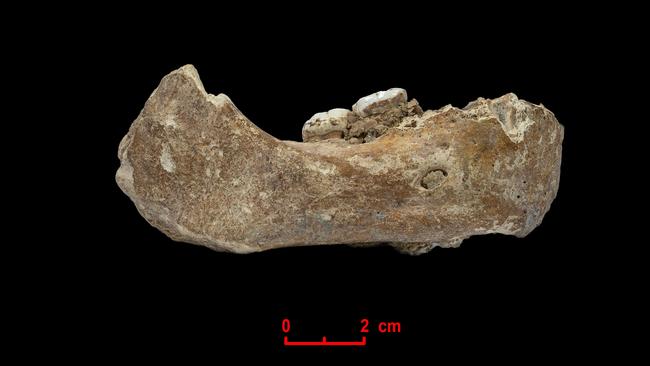Monk’s find of Denisovan jawbone bites ascent of man
A fossil jaw found in the Himalayan highlands of Tibet belongs to a vanished human species called Denisovans.

A fossil jaw found in the Himalayan highlands of Tibet belongs to a vanished human species called Denisovans, deepening the mystery of human evolution in Asia, scientists said yesterday in a new study probing the roots of humankind.
Discovered by a local Buddhist monk, the fossil shows these archaic human relatives lived on the roof of the world in rarefied air at almost 11,000 feet — an altitude that would leave many people today starved for oxygen. They settled at these frigid heights at least 160,000 years ago, more than 120,000 years before modern humankind arrived, said the scientists, who published their work on the fossil in the journal Nature.
While this early human species became extinct long ago, traces of their DNA survive in modern populations of Asia, the Pacific and Australia, several genome studies show. In fact, many people of Tibet today owe their unusual adaptation to such extreme high-altitude conditions, where there is 40 per cent less oxygen in the air than at sea level, to a unique gene inherited from these primordial mountain dwellers.
“One of the most spectacular aspects of this discovery is the location,” said project co-leader Jean-Jacques Hublin, director of the department of human evolution at the Max Planck Institute for Evolutionary Anthropology in Leipzig, Germany. “Nobody ever imagined that archaic humans would be able to dwell in such an environment.”
The discovery is the most recent to highlight the early history of human development in Asia, which has been long overshadowed by human-fossil finds in Africa and Europe.
“It became the sleeping beauty of paleoanthropology,” Dr Hublin said. “We are now turning to Asia again.”
Until the new find, the Denisovans were known only through a fossil fingertip, three teeth and a toe bone found in 2008 far from Tibet in a cave in the Russian Altai Mountains of Siberia.
In 2010, scientists successfully exhumed DNA from that finger bone and discovered a special variation of a blood-cell gene called ESPA-1 that affects the body’s response to falling oxygen levels, key to survival at extreme altitudes. Inherited by many Tibetan people, it is considered by some researchers to be the strongest instance of natural selection ever documented in a human population.
No DNA was recovered from the latest find, the researchers said, but they speculate that Denisovans likely lived at this extreme altitude long enough to develop that special genetic adaptation and then passed it on to more modern humans with whom they interbred.
It took almost 40 years for the fossil jaw to go from the hands of the Buddhist monk who first picked it up to publication in a peer-reviewed scientific journal.
According to project co-leader Dongju Zhang at China’s Lanzhou University, the monk found the fossil in 1980 while visiting the Baishiya Karst Cave in Xiahe, Gansu, China.
The deep cavern is a sacred site managed by a nearby temple. The steep approach to the cave entrance today is festooned with streamers of yellow, blue and red prayer flags.
“He grabbed something on the floor,” Dr Zhang said. Recognising something unusual about the primitive jawbone encrusted with mineral carbonate, “the monk gave it to the local living Buddha”.
Known formally as the Sixth Gung-Thang Living Buddha, the religious leader in turn gave the jawbone to Lanzhou University.
“It blows my mind,” Dr Hublin said.
The Wall Street Journal



To join the conversation, please log in. Don't have an account? Register
Join the conversation, you are commenting as Logout